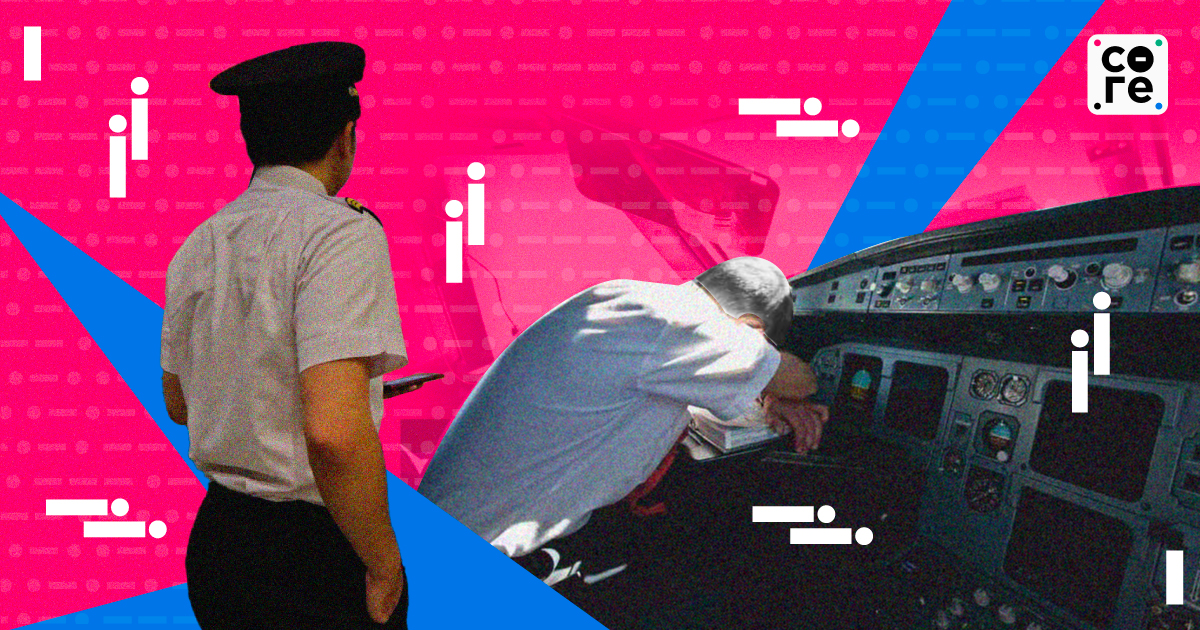
Why India's Airlines Need To Get On Board With DGCA's Relaxed Flying Norms
India's aviation watchdog announced new flight duty rules in a relief for pilots in the country but airlines don't want to implement them.

The work hours of Indian pilots are up for discussion, yet again. While aviation watchdog Directorate General of Civil Aviation (DGCA) has introduced new flight duty time limitations to pilots’ lives better, airlines have contested it saying this would mean a 25% shortage in their current workforce. “If the argument given is that they would be 25% short, would it not be prudent to think of the corollary of the theorem and say that currently, the pilots are working 25% more than their capacity that they can humanly do?” Captain Sam Thomas, president of the pilots’ body the Airline Pilots' Association of India, told The Core.
The DGCA announced new flight duty rules in January and has rewritten the definition of the night period, extending it by an hour, from 12 am to 5 am to 12 am to 6 am, and limiting the duty period to 10 hours. The aviation watchdog has refused to extend the June 1 deadline for implementing these rules.
The new rules mandate that pilots do fewer landings each day and work hours be limited to 10 hours. Internationally too the work hours for pilots are limited, but the landings are not. However, the situations in which pilots operate in India and other countries are different. For instance, in the US, one can drive 50 miles to reach the airport to operate an airplane because roads make the commute smoother.
“In Bangalore for instance, I am based out of Bangalore, the airport is 45 kilometres away and it takes me at least an hour and a half to reach the airport. Now, that's just one aspect of it. Now you have transportation, you have stresses along with that,” Thomas said.
In response to the rules, major Indian airlines have asked the DGCA to defer the implementation of the rules on pilot rest and duty periods by a year. The death of two pilots in 2023 on duty prompted the DGCA to overhaul flying norms.
“In India, when there were Indian Airlines and Air India, we never flew these many hours. It is with the advent of low-cost airlines that there is a systemic change that is required… This is a matter of flight safety. And you cannot have (a) midway in flight safety… (If) a pilot makes (even) half a mistake at the start, 50 (people) are in danger,’ Thomas said.
Burnout Issues
The concern about the physical and mental health of pilots is global. The nature of the job — be it pilots or cabin crew — is challenging and can lead to burnout quickly. The instance of a co-pilot of GermanWings, a low-cost German carrier, deliberately crashing a jet in 2015 and killing everyone on board, had stakeholders across the world take note.
Back home in India, the death of two pilots in 2023 saw pilots, crew members, and even airline management voicing concerns and protests on WhatsApp groups and more publicly on social media such as Facebook. The demand was to stop airline operators from pushing employees to their limits.
Lobby group the Federation of India Airlines, which consists of airlines IndiGo, Air India, Vistara, and SpiceJet that together carry 95% of passengers in India, has reportedly said the new rules will require airlines to increase the number of pilots by 25% and hiring and training them will not be possible by June 1, forcing them to cancel up to 20% of the flights.
“We can provide it (a common ground) we all sit together and move it to a point which is acceptable to everybody. However, I am still pro-DGCA, and pro-MOCA (Ministry of Civil Aviation) saying we are in charge of safety, and we'll take full care of it. This is the first time that the Federation of Indian Airlines has been turned down for any of their requests,” Thomas said.
Demand Supply Issue
India’s aviation boom saw the advent of numerous low-cost airline companies. And with it has increased the number of flights operated in a day. The Core had earlier reported that many Indian pilots left Indian carriers and opted for airlines like Qatar, which are notorious for their punishing schedules and rosters.
As far as demand for the crew is concerned, the market situation has changed significantly post-Covid. Air India is on a hiring spree, while IndiGo is expanding like there’s no tomorrow and new airlines like Akasa are struggling to find and retain talent, especially commanders.
A study done by the aviation intelligence body CAPA India in August last year found that in the broader perspective, as far as a crew's maximum flight time hours and cumulative duty periods were concerned, India aligned with the regulations of other major aviation markets and the European Union Aviation Safety Agency. However, a comprehensive evaluation was necessary to comprehend variances in other critical aspects and subtleties. Although Indian airlines stay within what is legally permissible, a thorough relook at what is physically advisable is required.
“Given the conditions in India, you have the monsoons, you have low visibility and you have a shortage of air traffic controllers, and the entire ecosystem is not geared up to handle these many flights… Just an hour has been increased. I don't see how that is going to affect anything,” Thomas said.
India's aviation watchdog announced new flight duty rules in a relief for pilots in the country but airlines don't want to implement them.

